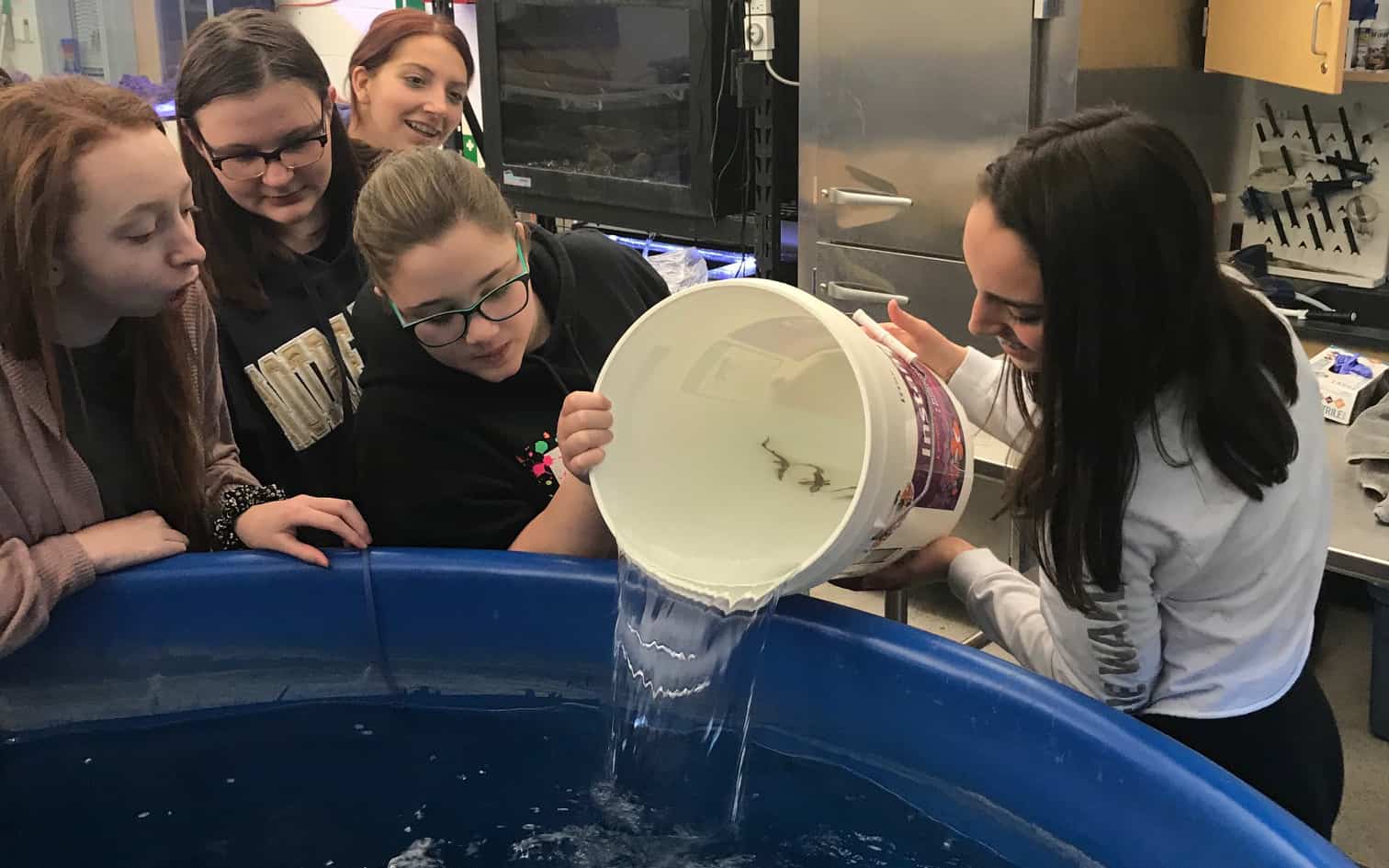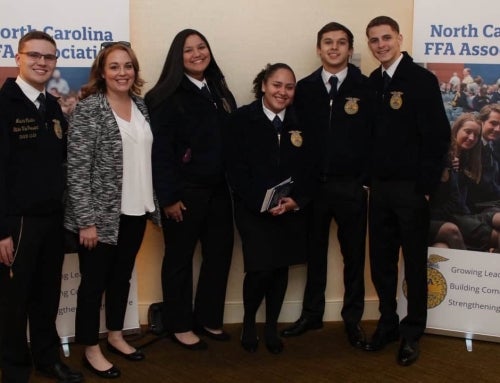You can learn a lot from a fish that’s been living since the time of the dinosaurs. At least, that’s been the case with the Southington FFA Chapter in Connecticut, which has earned a federal permit to care for the Atlantic sturgeon, a species that is known to be at least 85 million years old.
Though one of the oldest life forms on Earth, sturgeon have found modern times tough going. The big fish were once abundant in Atlantic coast waters. However, overfishing, pollution and other pressures have greatly reduced populations.
The sturgeon’s long and dramatic history makes it a fascinating study, says Owen McLaughlin, the chapter advisor. The ancient fish have turned out to be a bridge between aquaculture and natural resource curricula, he says.
It all got started with a student.
“While researching how a facility in North Carolina was raising sturgeon for caviar harvest, one of our students suggested that we get sturgeon for our aquaculture laboratory,” McLaughlin says.
Obtaining the fish from a national fish hatchery was the first step, and a big one. “We had to send diagrams, photographs and written descriptions of our aquaculture laboratory to ensure our facility would be able to adequately house and care for this amazing fish,” McLaughlin says.
The chapter is now caring for eight 3-inch Atlantic sturgeons, which can grow up to 16 feet in length and weigh 800 pounds. (More typically, the fish grow to 6 to 8 feet and weigh some 300 pounds.) Students are involved in water testing, monitoring and feeding the fish in a 700-gallon tank.
“Students have been very receptive to the newly arrived sturgeon, the first and foremost reason being that the fish are endangered and many students have never seen one in person, though they’ve all heard stories about them,” McLaughlin says.
“The second main reason students have been incredibly excited to house the fish in our laboratory is the small size. The students cannot believe that such a large fish could ever be so small.”
Scientists are working toward the restoration of sturgeon in East Coast rivers. Efforts are showing some early signs of success, says Eric Hilton, a Virginia Institute of Marine Science professor and leading expert on Atlantic sturgeon.
Hilton says he’s encouraged by the work being done by FFA chapters. “I feel strongly that any efforts where members of the public, particularly young people, can become involved in the conservation of fishes – and organisms, generally – is of huge value. The more we can get the word out and instill an appreciation for the natural world, the better.”












